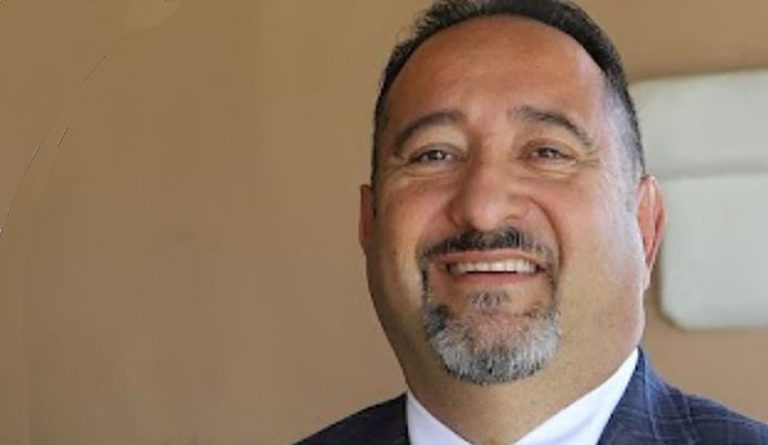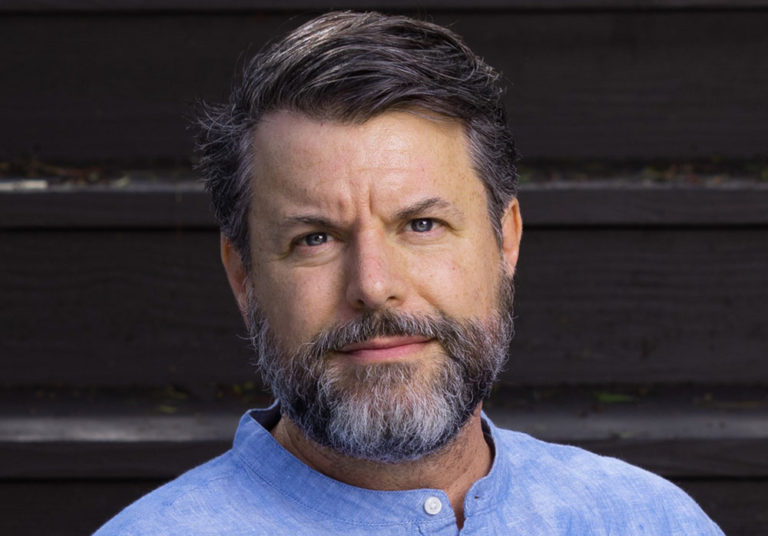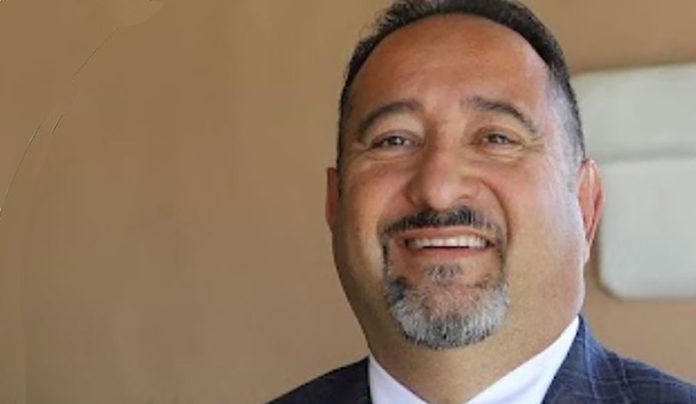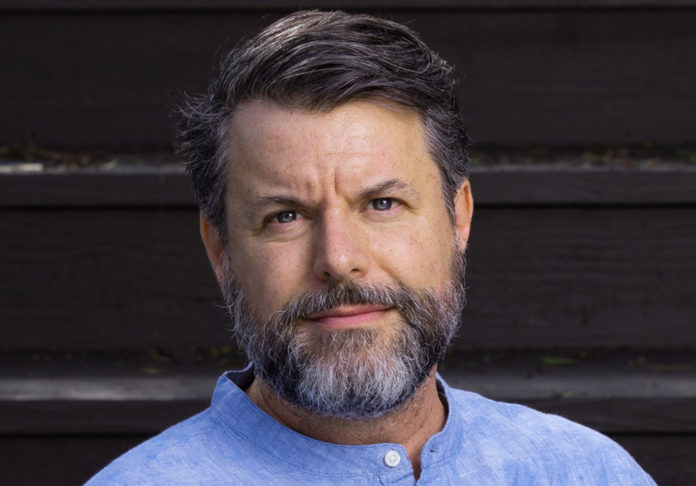THURSDAY
ELECTRONIC
CHROMEO
David “Dave 1” Macklovitch and Patrick “P-Thugg” Gemayel launched Chromeo in 2002. The Montreal-based electro-funk duo makes high-energy dance music with rock and disco elements. The duo has released six albums, with 2024’s playfully titled Adult Contemporary as the latest. Chromeo’s modern take on ’80s dance music has proven successful; two of their albums have reached the number-one spot on the US dance charts. Chromeo has also carved out a successful niche by remixing the work of other artists, including Vampire Weekend, Lorde, Maroon 5 and even Elvis Presley. Ruth Radelet opens. BILL KOPP
INFO: 8pm, Catalyst, 1011 Pacific Ave., Santa Cruz. $47/adv, $52/door. 713-5492.
FRIDAY
EXPERIMENTAL
CHUCK JOHNSON
With his early trio of albums (A Struggle Not A Thought, Crows in the Basilica and Blood Moon Boulder), producer, composer and musician Chuck Johnson established his talent and grace on the acoustic guitar. He introduced experimental electronics on subsequent albums and took the pedal steel to places it’s never been before, creating lush ambient soundscapes in the process. Unsurprisingly, he’s been chosen to soundtrack films for HBO, PBS and more. He is joined by Oakland’s equally experimental Mind Mirage at Indexical this Friday to kick off their Fall 2024 season. KEITH LOWELL JENSEN
INFO: 8:30pm, Indexical, 1050 River St. #119, Santa Cruz. $16.
FOLK
NINA GERBER & CHRIS WEBSTER
Singer Chris Webster’s soulful, folksy voice, best known around these parts from her work with perennial world music favorites Mumbo Gumbo, is perfectly matched with virtuoso guitarist Nina Gerber, celebrated for her collaborations with folk legend Kate Wolf. These two women are known for their ability to support and collaborate within an ensemble, but they’re more than capable of holding the stage on their own. Seeing them as a duo is a real treat for audiences, who’ll hear the nuances of two master performers. Rags Rosenberg is in town from Carmel-by-the-sea to open the show. KLJ
INFO: 7pm, Ugly Mug, 4640 Soquel Dr., Soquel. $25/adv, $28/door. 477-1341.
SATURDAY
AMERICANA
ANDY CHASE’S THUNDER & LIGHTNING BAND
Throughout his life, Andy Chase has lived all over the world but finally landed in his beloved Amarillo, Texas; his music is a testament to that: part rock and part country, with dashes of honky-tonk and western swing blended for a pure Americana cocktail. Chase’s Thunder & Lightning Band’s latest album shows the band doing what they do best with a mix of horns, pedal steel and slide guitar. This Saturday’s show at the Crow’s Nest will be bittersweet as it’s drummer David Dalessandro’s retirement show, meaning it will also be a hell of a party. MAT WEIR
INFO: 9pm, Crow’s Nest, 2218 East Cliff Dr., Santa Cruz. $8. 476-4560.
INDIE
INNER WAVE
Inner Wave is a pleasant breath of fresh air in a world of preprogrammed beats and heavy distortion. Formed in the mid-aughts, the band has evolved to embrace an alternative indie-pop sound drawing from influences like the Arctic Monkeys, the Strokes and Ridley Scott’s sci-fi masterpiece, Blade Runner. Their psychedelic, dreamy pop style is playfully intriguing, calling upon the listener to step through the doors of perception into a world of dancing fantasy. For fans of Tame Impala, MGMT and the Red Pears, get ready for Inner Wave to wash away the day’s troubles. MW
INFO: 9pm, Moe’s Alley, 1535 Commercial Way, Santa Cruz. $32/adv, $36/door. 479-1854.
MONDAY
JAZZ
ADRIAN LEGG
When guitar virtuoso Joe Satriani singles a peer out as “simply the best acoustic guitar player I’ve ever heard,” we’d be wise to notice. Englishman Adrian Legg will sit onstage on his stool with a crowd of custom electric/acoustic hybrid guitars within reach and more pedals than the Tour de France as he shows off his unique electric fingerstyle guitar playing while also sharing stories and observations from a lifetime of traveling the globe making music. KLJ
INFO: 7pm, Kuumbwa Jazz Center, 320-2 Cedar St., Santa Cruz. $35-$37. 427-2227.
TUESDAY
AUTHOR EVENT
JOSEPH E STIGLITZ
Joseph Stiglitz, a leading economist and winner of the Nobel Prize, is discussing his latest book, The Road to Freedom, with Dr. Chris Benner. The book critically analyzes American economic and political systems, asking the question: Are we really free? During his time as an economic advisor to presidents and as a chief economist at the World Bank, Stiglitz has witnessed firsthand how the economic and political worlds affect each other. He argues that blind dedication to the “neoliberal experiment” only benefits the elite, and he provides tools for a better future through collective action, regulation and investment. A copy of the book is included with each ticket. ISABELLA MARIE SANGALINE
INFO: 7pm, London Nelson Center, 301 Center St., Santa Cruz. $39-$44. 423-0900.
WEDNESDAY
INDIE
CHATTERTON
Chatterton built a devoted following on Bandcamp with demos featuring Brock Pierce as a solo artist. This past March, their long-awaited debut studio album (the result of Pierce partnering with multi-instrumentalist and producer Logan Scrivner) was released to critical acclaim in the Independent Music Press for its nineties-influenced lo-fi buzziness, with some acoustic guitar and even a touch of slide guitar mixed in. Think Sonic Youth at their shoegaze-iest. KLJ
INFO: 6pm, SubRosa Community Space, 703 Pacific Ave., Santa Cruz. $10. 426-5242.
REGGAE
ROOTS OF CREATION
New Hampshire-based Roots of Creation begins with a dub reggae foundation, then applies rock, electronic and pop sensibilities to the music, creating a deep groove that resonates with the jam band crowd. Their latest release, Grateful Dub: A Reggae-infused Tribute to the Grateful Dead, applies that approach to the music of the Dead, and the hybrid comes off quite well. Some of the recast arrangements (like Jerry Garcia’s “Sugaree”) are nearly unrecognizable as Grateful Dead songs, while classics like “Ripple” fit seamlessly into the reggae idiom. Somehow, it all works. And in a nod to the Dead’s philosophy, Roots of Creation is a taper-friendly act. BK
INFO: 8pm, Felton Music Hall, 6275 Highway 9, Felton. $22/adv, $25/door. 704-7113.

























